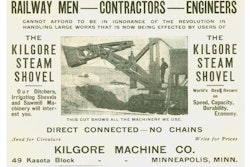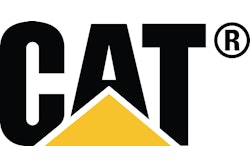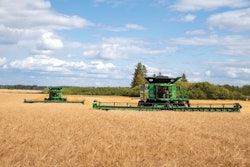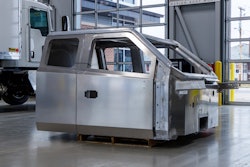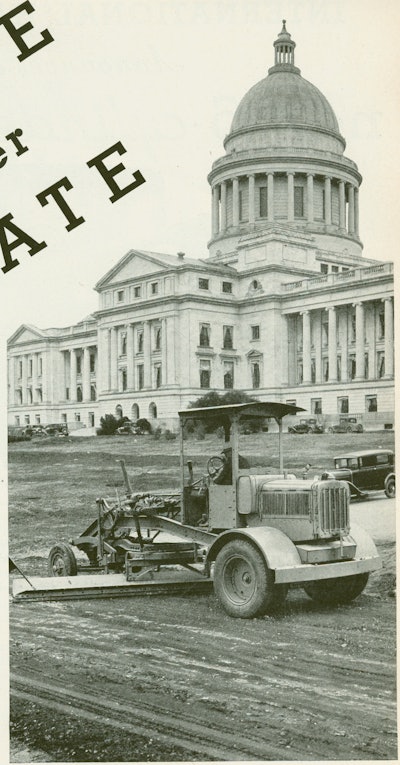
During the 1920s, many companies offered motor graders consisting of a grader frame mounted on a wheel or crawler tractor produced by another manufacturer. Caterpillar, which had purchased the Russell Grader Company in August 1928, was the first company to take the technology to its logical next level. In 1931, Caterpillar introduced the Auto Patrol, and it embodied several major design breakthroughs.
- Rather than mating two different machines together, the grader and power unit were designed as a complete, integral unit, and the entire machine rode on a common frame rather than two separate frames combined.
- It was the first motor grader to use power-operated blade controls, eliminating hand wheels and cranks. Not having to put so much effort into controlling the blade enabled the operator to make smaller adjustments more quickly – as fine as 1/8 in. (0.32 cm), and raising the blade as fast as 1 in. (2.54 cm) per second – with increased productivity.
- It rode on pneumatic tires with puncture-proof tubes instead of the conventional solid rubber tires. The single rear axle had dual 40 x 8 in. (101.6 x 20.3 cm) tires, and the front tires were 32 x 6 in. (81.3 x 15.2 cm).
- The gas engine was in the very rear of the machine, and the operator was positioned atop the frame, midway between the blade and the rear tires. He had a clear view down onto the blade, while the engine placement reduced its exposure to dirt and put more weight on the drive axle, resulting in more reliable operation and better balance.
- The entire powertrain was designed specifically to give the grader the greatest possible traction, blade pressure and stability. Moreover, the weight and positioning on the frame of the powertrain served to distribute weight across the front and rear axles and the blade, and the weights of the operator’s compartment, power control mechanism and the blade and circle assembly were designed to produce maximum blade pressure, traction and resistance to side thrust.
- Two sets of screw clamps with lock nuts prevented play and lost motion in the circle and blade assembly under heavy load while allowing the circle to turn freely, and a crossbar could be unbolted to allow the assembly to float more freely when working under light load at higher speed. A worm gear-driven side shift enabled the grader to trim shoulders, and blade end extensions further increased its reach.
- Blade positioning along the length of the machine was determined by striking a balance, as it were, between the actions of the front and rear wheels. The further from the front axle, the less vertical motion would be imparted to the blade as the front wheels rolled over rough ground. The further from the rear axle, the less chance there was that the drive tires would be forced off the ground by down pressure on the blade. In the same manner, wheelbase length was an optimum between greater length to produce a smooth blading action while minimizing the effect of roughness in the road surface, and shorter length to provide for shorter turning radius.
For all its innovations, the Auto Patrol was discontinued a year after introduction. Although motor grader designs have evolved considerably since 1931, the basic concepts of the Auto Patrol are the standard of today’s graders.
The Historical Construction Equipment Association (HCEA) is a 501(c)3 non-profit organization dedicated to preserving the history of the construction, dredging and surface mining equipment industries. With over 3,800 members in over a dozen countries, activities include publication of a quarterly educational magazine, Equipment Echoes, from which this article is adapted; operation of National Construction Equipment Museum and archives in Bowling Green, OH; and hosting an annual working exhibition of restored construction equipment. The 2020 show has been postponed to August 27-29, 2021, in Concordia, KS. Annual individual memberships are $35.00 US within the USA and Canada, and $45.00 US elsewhere. HCEA seeks to develop relationships in the equipment manufacturing industry, and offers a college scholarship for engineering and construction management students. Information is available at www.hcea.net, by calling 419-352-5616 or e-mailing [email protected]. Please reference Dept OEM.




